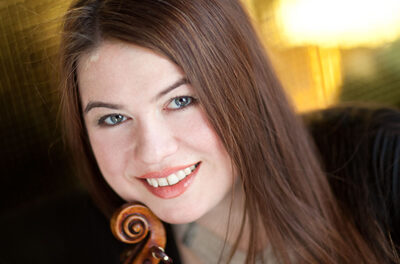A youthful and exuberant Cameron Carpenter performed one of the most unusual organ concerts ever on Brevard College’s Porter Center series. Only 27, Carpenter is a self-proclaimed iconoclast (“I am a debunker of things”) whose artistic mission not only challenges conventional notions of what constitutes an organ recital, but whose technical prowess is also redefining what is possible on the instrument. A graduate of the North Carolina School of the Arts and the Julliard School, he is a restless and bright spirit whose prodigious musicality is put in service to old ideals (19th century showmanship) and new (the repertoire, the clothes, those higher-heeled “Maverick” organ shoes). He keeps the debate lively, and few left the concert disappointed.
Carpenter performed on the hall’s Kirkpatrick-Coleman tracker organ, a three-manual instrument with over 3,500 pipes created by Minnesota builder Daniel Jaeckel. Although he referred to the mechanical action as “medieval,” he contradicted his swipe at the instrument by confessing he actually liked — no, loved — the instrument and had much to learn by playing it. Carpenter loves to feel connected with his audience and clearly hated being physically removed from sight by sitting in the organ loft. To compensate, two screens were set up for viewing his upper body and his flying feet. His chats between pieces revealed much about his personality — irreverent, entertaining, opinionated, and fiercely devoted to his art.
He opened with a beautifully thoughtful rendition of J. S. Bach’s Prelude and Fugue in A minor, S.543. Indeed, three other Bach works formed part of the program’s first half, in a nod to the historic nature of the hall’s instrument: the Chorale Prelude on “Nun komm, der Heiden Heiland,” S.659, from the Great Eighteen Chorales, another Prelude and Fugue in G major (but with his own added cadenza at the end), and the Prelude and Fugue in C minor from Well Tempered Clavier, Book I, with the left-hand part transferred to the pedals. This is vintage Carpenter — rearranging existing works to make them harder, like Leopold Godowsky’s Chopin étude transcriptions — and there was more to come. Shostakovich’s “Festive Overture,” Op. 96, was colored to sound like theater music, with pedal clusters and tremolos — in fact, incessant tinkering with the registration while playing at warp speed was a constant activity plane on each piece. Liszt’s Mephisto Waltz No. 1 seemed a logical program choice for one drawn to the 19th-century greats. The showstopper, however, was Octaves in C-sharp minor, from 6 Etudes, Op. 5, by Jeanne Demessieux, a student of Dupré, whose étude featuring non-stop octaves in the pedals has been considered to be nearly unplayable.
After intermission, Carpenter “obliged the house management” by performing three works on piano: Chopin’s original Étude, Op. 10, No. 5 (the “Black Key Étude”), followed by Godowsky’s arrangement of the same, with the placement of the difficult passagework for the right hand into the left. In this spirit of making difficult works even more unplayable, Carpenter played his own arrangement of Chopin’s Étude, Op. 10, No. 2, likewise moving the difficulties to the left hand while injecting a dose of jazz and ragtime.
The rest of the evening was spent back in the organ loft, with another major organ work, the retrospective Introduction and Passacaglia in F minor by Max Reger. Then there was music from the anime film Howl’s Moving Castle (another passion of his). The program ended with an astounding three-movement improvisation ending with a complex, full-blown fugue, offering the evening’s most profound insight into the creative spirit of this great mind. Two encores followed: first was the title track of his 2009 Grammy-nominated Revolutionary CD (on the Telarc label), featuring the notoriously difficult left-hand part assigned to the pedals, and Variations on a Theme from Carmen by Bizet, as arranged by Horowitz.
Much has been made of the image he’s built — the rock-star stylings, sequined clothes (changed from all black to all white at intermission), hair, etc., and the performances with flashing, colored lights. Strip that away, and you have a supremely talented and personable artist whose searchings for artistic meaning seem sincere and whose performances are guaranteed to blow you away.












